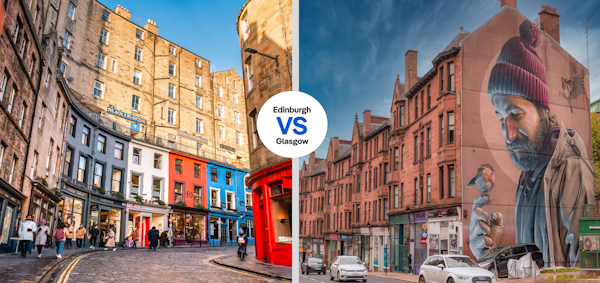Less than an hour apart by train, Glasgow and Edinburgh are firm but friendly rivals, each showcasing a different side to Scotland’s character. If you take a trip to Scotland, you’ll likely start from one city or the other, with trains and planes dropping in daily from around the UK and across the world.
But which city should you choose for a first stop in the land of whisky, glens and Nessie? Cultured Edinburgh, with its grand monuments and tartan trim? Or convivial, unpretentious Glasgow, with its working-class soul? Here, two of our writers make the case for the cities they love to help you decide.

Why Edinburgh is the best place to go
After an impactful first visit to Edinburgh in 2008 and several years living in London, Kathryn Streeter started visiting Edinburgh regularly when her children attended the University of St Andrews. Today her daughter is married to a Scot, ensuring ongoing visits to the city. Here she makes the case for starting your trip in Edinburgh.
Edinburgh is the stuff of fairytales and it can’t be topped
Although it is technically the smaller of Scotland’s two biggest cities, the 900-year-old Scottish capital feels intimate and knowable, with its iconic Old Town wrapped around an ancient volcanic outcrop near the Firth of Forth. Edinburgh’s majestic castle, showy landmarks and atmospheric, twisting alleys are sure to dazzle. Adding a dash of spice, the 18th-century New Town is decked out with stately Georgian townhouses, designer shops and elegant squares.
Edinburgh’s big personality engenders affection and enchantment. You’ll quickly come to think of Auld Reekie (the city’s 17th-century nickname) as an endlessly interesting old friend. Marked on the UNESCO-World Heritage list for its historic downtown, Edinburgh is fairytale material and it can’t be topped, for all Glasgow’s endearing virtues.
To me, Edinburgh’s varied topography and sea views are fundamental to its appeal. Sitting on seven hills, the city’s ruggedly uneven landscape adds drama, with a romantic, winding web of steep roads delivering new discoveries around every turn.
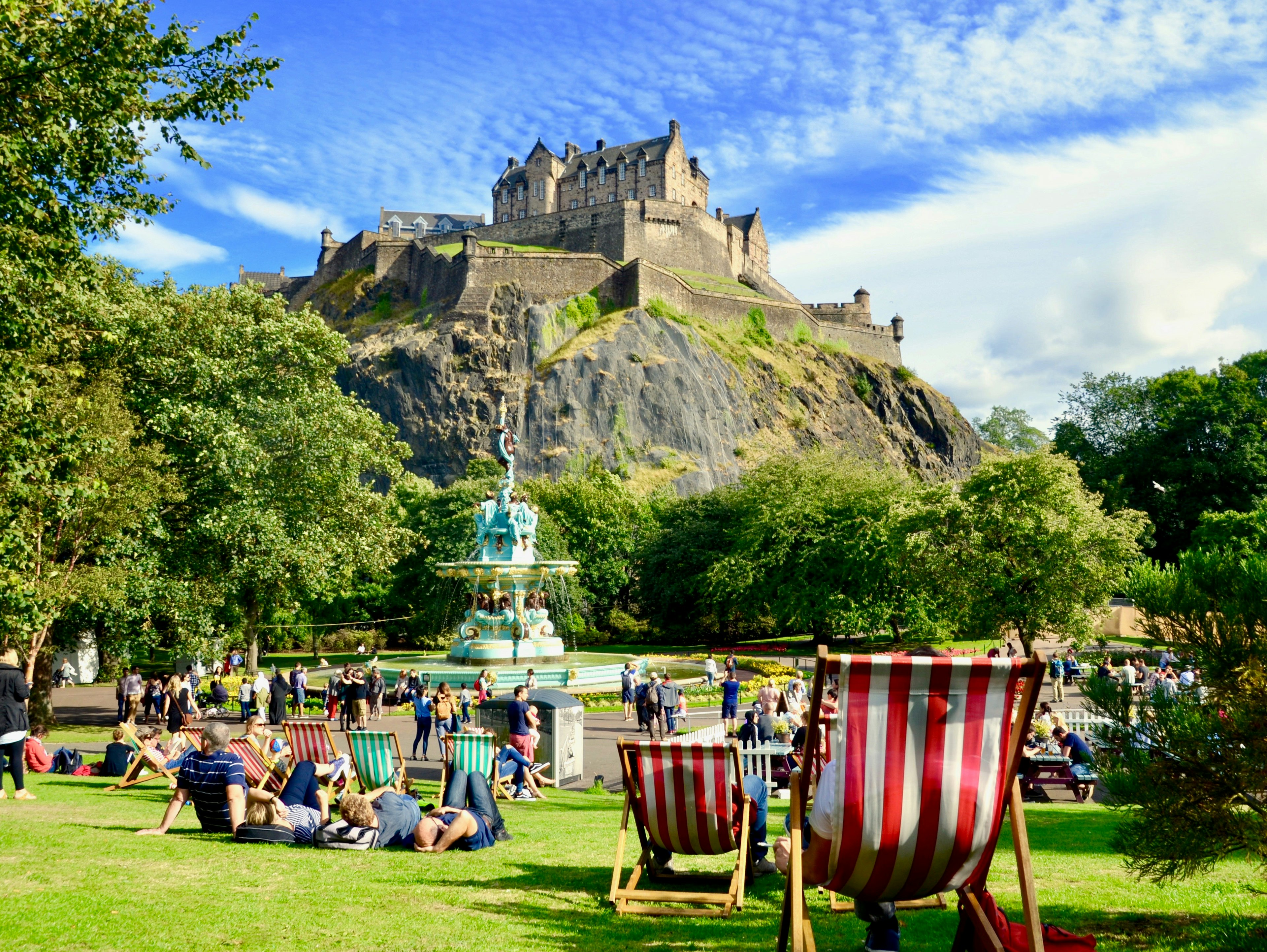
History on all sides
Adjacent to Waverley Station – named for the Sir Walter Scott novel – the charm offensive begins at Princes Street Gardens, created on the mound of earth excavated during the construction of the New Town. Prepare for sensory overload when you exit this green space – lined up in front of you are the towering monument to Walter Scott, the grand Balmoral hotel on Princes Street and the stone-lined streets of New Town. Shifting your gaze, you’ll get your first glimpse of the ancient castle that crowns the city, with its spiky Gothic spires jutting skyward.
Edinburgh’s Old Town runs along the bustling Royal Mile, with Edinburgh Castle at its peak atop Castle Rock. Here you’ll find the city’s oldest structure, St Margaret’s Chapel, built in around 1130 CE. The base of this ancient crag is anchored by the modern Scottish Parliament and the historic Palace of Holyroodhouse, the official residence of the British Royal Family when they’re in Scotland.
Reminders of the past – military, political and religious – lie everywhere, sometimes lending the city a slight atmosphere of the macabre. Visitors can take in sites linked to the burning of witches at the castle, the settings for gruesome public executions at the Grassmarket, and the spot in the Holyroodhouse where David Rizzio, the lover of Mary, Queen of Scots, was murdered.
In the city’s tight labyrinth of wynds (alleys) and closes, you can descend into an underground world steeped in spooky lore on a ghost tour of Mary King’s Close. Meanwhile, St Giles’ Cathedral, founded in 1124 CE but significantly altered over the centuries, is synonymous with John Knox and the Scottish Reformation. This was also the spot where the body of Queen Elizabeth II lay in state in 2022.

Lively Scottish culture
Edinburgh feels unequivocally Scottish. Shops carrying prized whisky, tartans and Harris Tweed line the streets while cheery buskers and bagpipers fill the air with music – providing a hint of what happens during the raucous Fringe festival. Explore the cross streets of Canongate and oft-photographed Cockburn, or follow brightly painted Victoria Street to Grassmarket, a lively open space dotted with pubs.
Edinburgh was the first UNESCO City of Literature, and you’ll find yourself surrounded by the literary giants responsible for the Scottish Enlightenment, the poetry of Burns Night, Jekyll and Hyde, Sherlock Holmes, Waverley, Peter Pan and Harry Potter. Take a Harry Potter tour to discover the backstory of Hogwarts and the graves at Greyfriars Kirkyard that inspired Tom Riddle and other characters.
Brodie’s Close sheds light on the real-life individual who inspired Robert Louis Stevenson’s villainous Mr Hyde, while the train station displays famous lines from Sir Walter Scott’s works and numerous landmarks celebrate the leaders of the Enlightenment.
The less touristy New Town is eye candy – a spray of stylish squares, shops and townhomes, wine bars and upmarket dining. Find a bench at St Andrew Square to people-watch before rambling along the pretty Water of Leith Walkway. The trendy neighborhoods of Stockbridge and Dean’s Village are two of my favorite spots and are well worth exploring.
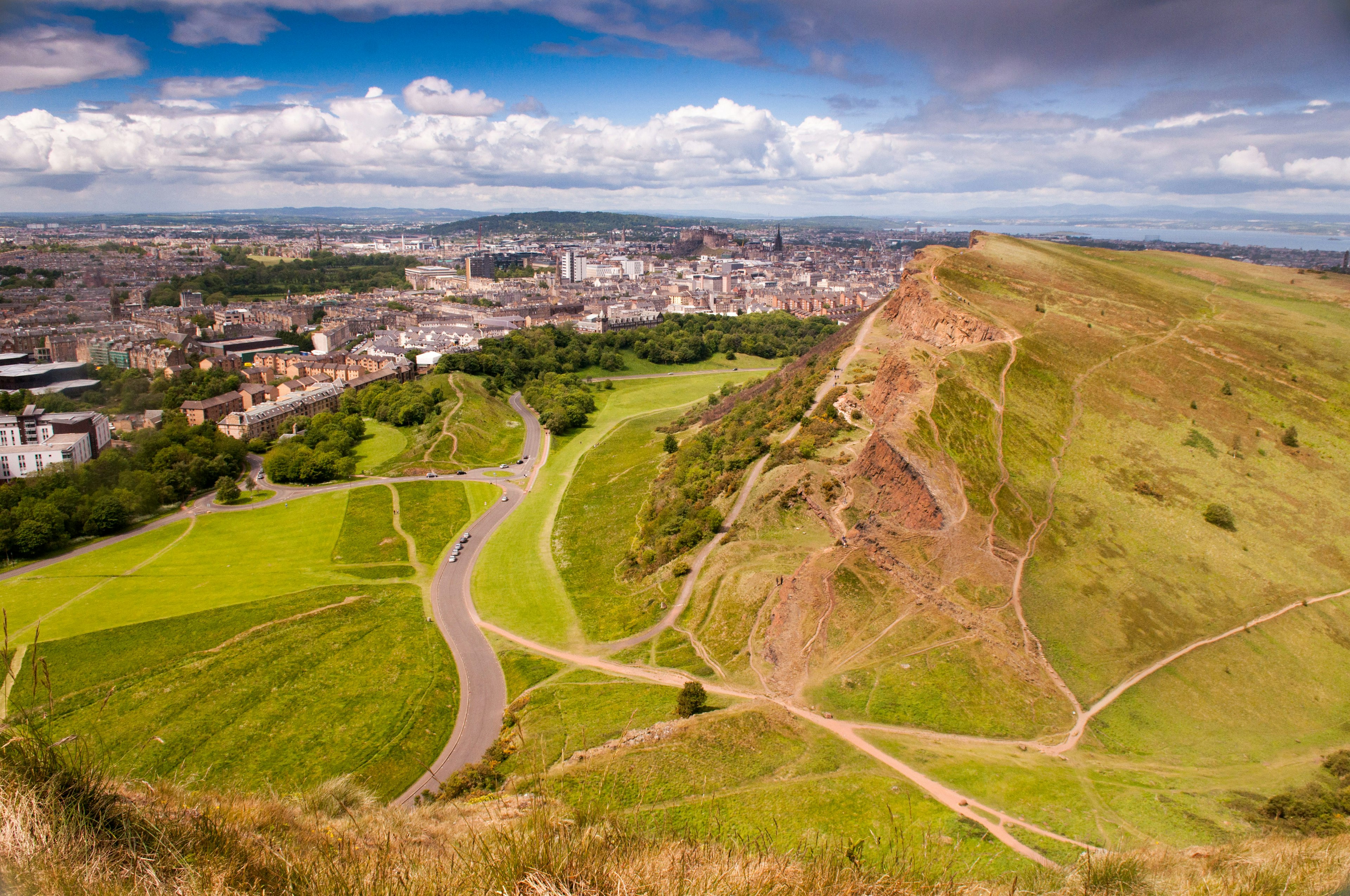
Green and pleasant Edinburgh
Edinburgh also offers an abundance of green spaces and paths for walking. Don’t miss The Meadows by the University of Edinburgh, Bruntsfield Links (with a free golf course) and much-loved Holyrood Park. For a walk with a view, explore gentle, heather-adorned Salisbury Crag, or take a more ambitious hike to the top of Arthur’s Seat, the highest point in Edinburgh. For a quick, spectacular walk near the center, climb Calton Hill at the southeast end of the New Town for commanding city views,
Superb public transportation complements the city’s easy walkability. A tram line connects the center to the airport and it’s easy to master the city’s superb bus system with an easy-to-use app. Even if you fly into London Heathrow, you can hop on a train to Waverley and be on the doorstep of Edinburgh’s sights in as little as six hours.
With so much on offer, it’s hard to imagine starting a trip to Scotland anywhere else, but if you’re curious, Glasgow is just a 40-minute train ride away. However, once you get a taste of Edinburgh, I doubt you’ll be able to tear yourself away!
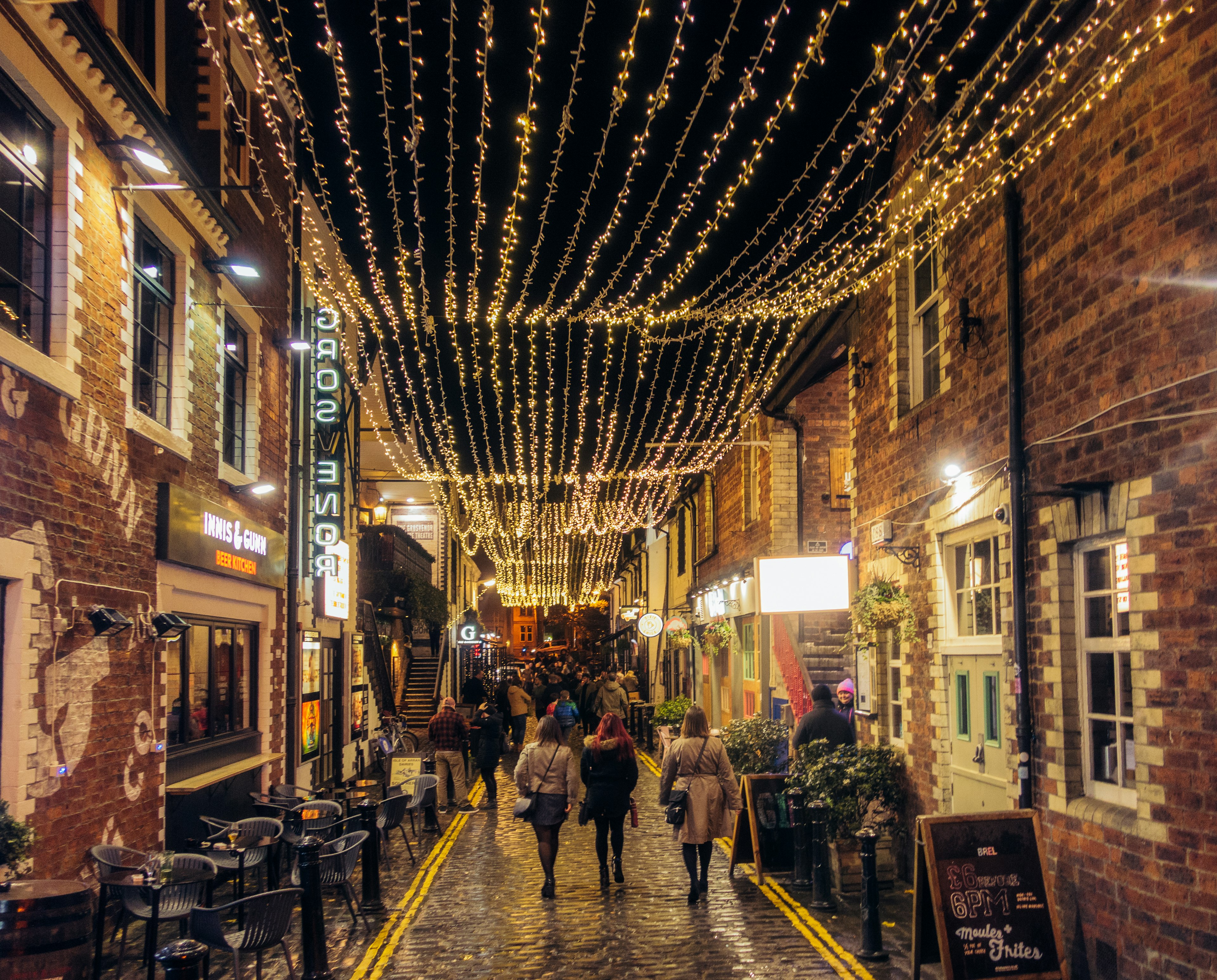
Why Glasgow is the best place to go
Neil Wilson was born in and grew up in Glasgow and his grandparents were servants on the Pollok Estate (now home to the Burrell Collection), but he defected to Edinburgh for university and stayed there for three decades. He has written about Scotland for Lonely Planet for more than 25 years, including authoring the latest edition of Pocket Glasgow. Here’s his pitch for why you should start your Scottish trip in Glasgow.
Choose Glasgow for authentic urban charm
You can tell a lot about a city from its monuments. Edinburgh’s grand civic landmarks – most famously the soaring Gothic spire commemorating historical novelist Sir Walter Scott – speak of lofty Enlightenment ideals, and a city steeped in literature and philosophy. Glasgow’s monuments are more irreverent, but no less worthy.
Perhaps the best-known monument in Glasgow is the equestrian statue of the Duke of Wellington that stands in Royal Exchange Square – famed not for its aristocratic subject but for the traffic cone that sits atop the duke’s head. The cone first appeared in the 1980s, and no matter how many times the authorities remove it, it keeps getting replaced.
It’s a symbol of Glasgow’s wicked sense of humor and its democratic will, a reminder that Glaswegians are deeply proud of their working-class background and anti-establishment traditions. Would you expect any less from the city that spawned Billy Connolly and Robbie Coltrane?
For me, this sums up the great appeal of Glasgow – a city that is creative and iconoclastic; that doesn’t take itself too seriously; that is prepared to puncture the pompous pretensions of anyone who thinks themselves superior.
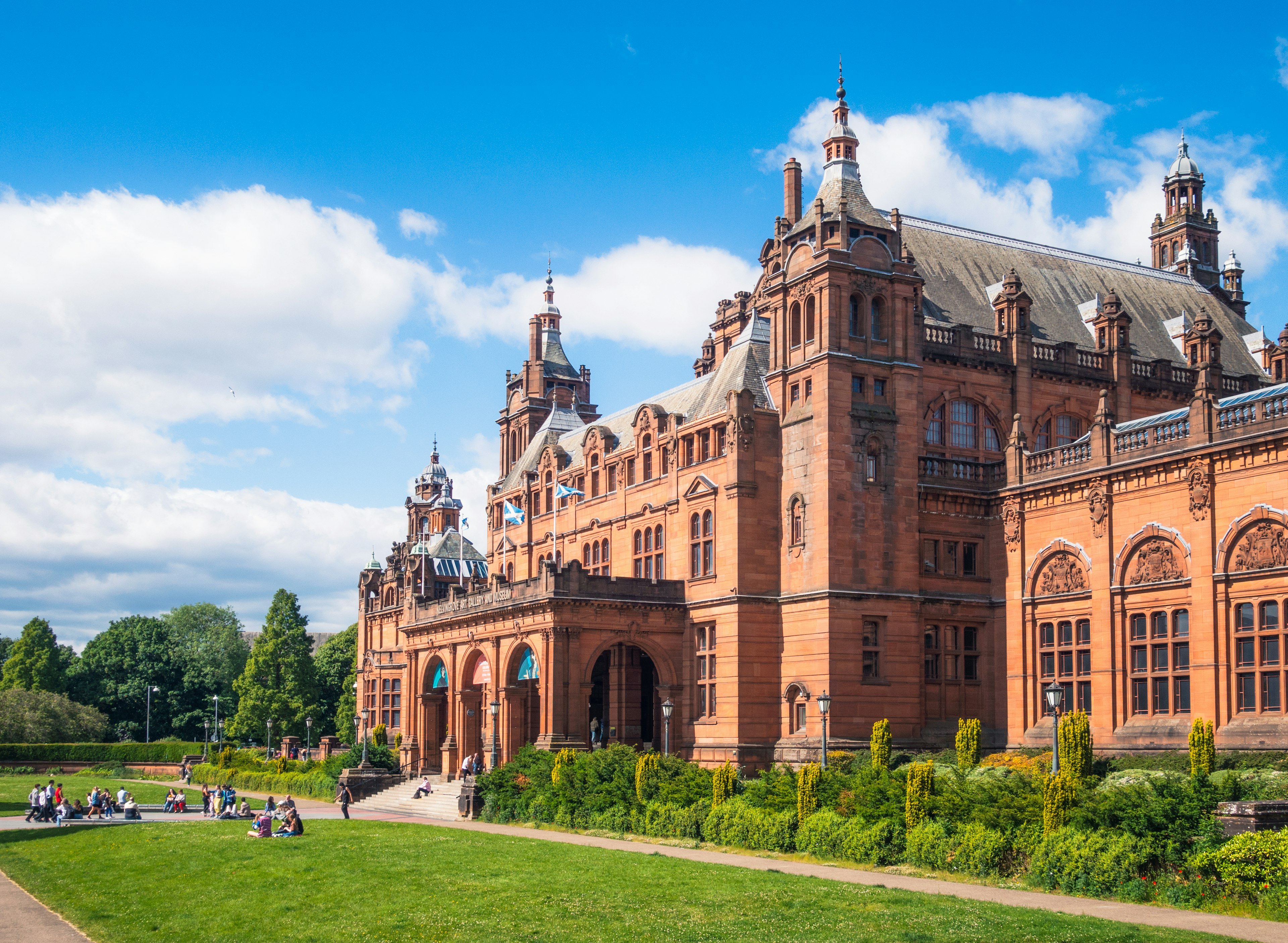
Edinburgh’s humbler, better rival
Scotland’s tale of two cities is the story of an ancient rivalry between close neighbors: one wealthy, largely middle-class and a bit stand-offish, the other poorer but friendlier and proudly working class. Get into a conversation in Edinburgh, and you’ll probably be asked which school you went to; in Glasgow, it’s which football team you support.
I’ve heard detractors say that Glasgow lacks the beauty of Edinburgh, with its picturesque castle and elegant Georgian New Town. But Glasgow is one of the greenest cities in the UK, and on a sunny day the view from the top of the tower at the Glasgow Science Centre takes some beating, with the River Clyde unraveling like a blue ribbon through the city sprawl and the hills of the Highlands hugging the northern horizon.
The city center is a feast for the eyes. You just have to look up from the tarmac to see magnificent Victorian architecture on all sides. Sir John Betjeman (1906-84), Britain’s former Poet Laureate, described Glasgow as “the greatest Victorian city in the world” – a tribute to its architecture and its vital role in the nation’s success.
Then there are the city’s huge mural paintings. Favorites include a towering painting of St Mungo, Glasgow’s patron saint, depicted as a homeless person near the junction of High St and Burrell’s Lane, and the giant portrait of Glasgow-born comedian Billy Connolly at the Glasgow Hootenanny on Howard St.
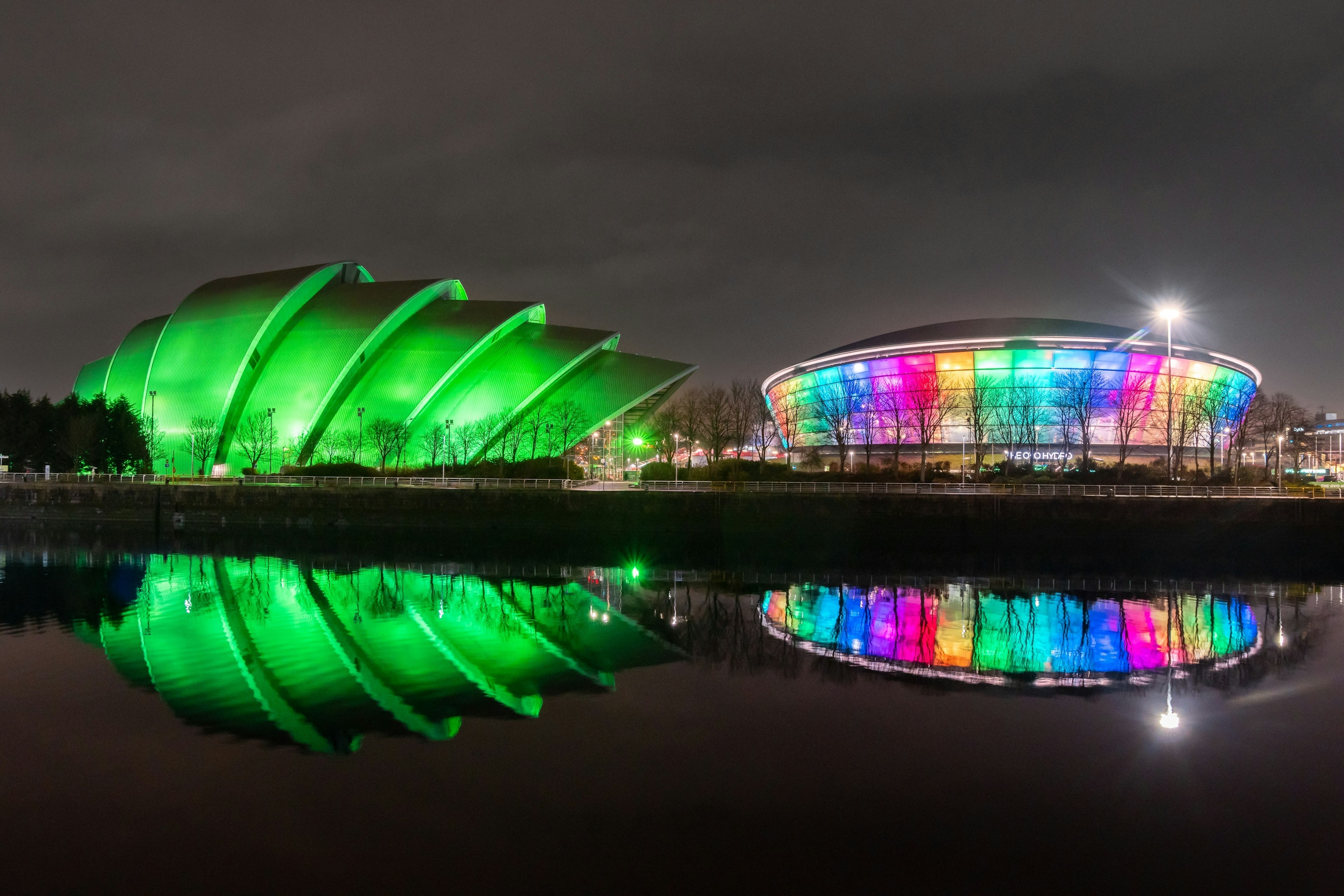
Glasgow’s modern journey
With its long tradition of shipbuilding and heavy engineering, Glasgow was once the powerhouse of the British Empire, but the city fell on hard times after World War II – building perceptions of the city as a place of post-industrial decline. But the Garden Festival of 1988 changed the world’s view of Glasgow, and the city has bounced back in a big way to become one of Britain’s liveliest and most engaging hubs.
Take a bike ride along the Clyde Walkway, where former shipyards have been redeveloped into a striking waterfront parade of modern architecture, and look out for the distinctive, zinc-clad forms of the SEC Armadillo and Glasgow Science Centre and the waveform roofline of Zaha Hadid’s spectacular Riverside Museum. Speaking of which, Glasgow’s museums and art galleries are world-class, with the breathtaking Burrell Collection, Kelvingrove Art Gallery and Hunterian Art Gallery beating Edinburgh’s offerings into second place.
Less fried Mars bars, more Scottish gastronomy
When it comes to eating out, Glasgow can easily hold its own against the capital. Check out the list of the best places to eat in Glasgow and you’ll find Michelin stars and more.
If I had to pick just one restaurant, it would be The Ubiquitous Chip, which opened in 1971 and is still going strong. This foodie pioneer was ahead of the game in promoting local produce and celebrating the best of Scottish cuisine (the name is a sly dig at Scotland’s deep-fried culinary reputation). A fun fact: US TV host Craig Ferguson and Trainspotting and Harry Potter actress Kelly Macdonald both worked here before they became famous.
Perhaps the most appealing aspect of the Glasgow versus Edinburgh rivalry is that you don’t really have to choose between them – the two cities are less than an hour apart by rail, making each an easy day trip from the other. But I’ll still make the case for the city where I was born and raised – as any Glaswegian will be happy to inform you, the best thing to come out of Edinburgh is the train to Glasgow.

